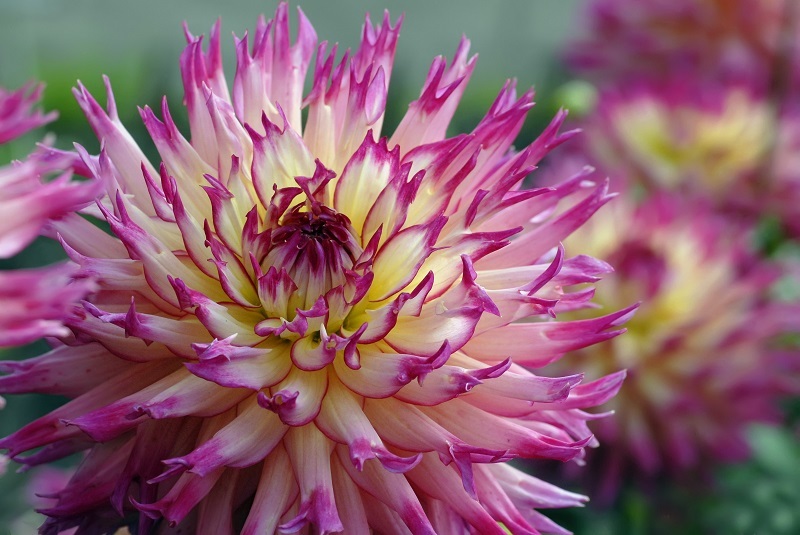The Magic of Sunflowers: 8 Facts to Discover
Posted on 22/08/2025
The Magic of Sunflowers: 8 Facts to Discover
Sunflowers have captivated humanity for centuries with their radiant faces and robust stalks. These remarkable plants are more than just a cheerful symbol of summer--they are botanical wonders brimming with fascinating secrets. Dive into the world of sunflowers with this comprehensive guide, revealing the magic of sunflowers through eight amazing facts every nature enthusiast, gardener, or curious learner must know.
1. Sunflowers Track the Sun: The Phenomenon of Heliotropism
One of the most interesting facts about sunflowers is their unique ability to track the sun's movement during the day, a process known as heliotropism. While they're young, sunflower buds face east in the morning and slowly turn west as the sun moves across the sky. This fascinating trait helps the plant maximize photosynthesis, ensuring optimal energy intake for growth.
- Heliotropism mainly occurs in the bud stage. Mature flower heads usually face east.
- This movement can boost growth rates as youthful sunflowers can absorb more sunlight.
- The word "heliotropism" comes from the Greek words "helios" (sun) and "tropos" (turn).
The Science Behind the Sun-following Behavior
Sunflowers have a special internal clock and growth mechanism that allow their stems to elongate more on one side, effectively pushing the flower head to follow the sun. This magical sunflower trait not only grabs attention in gardens and fields but also demonstrates the wonders of plant adaptation.

2. Sunflowers Are Native to North America
While sunflowers might evoke images of rolling European fields or Van Gogh's masterful paintings, sunflowers are actually native to North America. Indigenous tribes cultivated these versatile plants over 4,500 years ago, primarily for their nutritional seeds and oil.
Today, wild sunflowers still thrive across the continent, and North America remains a significant producer of sunflowers worldwide.
- Sunflowers were domesticated in areas of present-day Arizona and New Mexico.
- They had various uses, including food, medicine, dye, and ceremonial tools.
- Spanish explorers introduced sunflowers to Europe in the 16th century.
The Cultural Roots of Sunflowers
For Native American cultures, the magic of sunflowers was found not just in their beauty but in their versatility. Sunflower seeds were ground into flour, cracked for snacks, or pressed for oil, while the vibrant yellow petals provided dye for textiles. Their vital role in the ecosystem and daily life highlights why sunflowers hold such a special place in cultural heritage.
3. Sunflowers Come in Many Shapes, Sizes, and Colors
Though most people picture classic tall sunflowers with large golden blooms, sunflowers display an incredible diversity. There are over 70 species and hundreds of varieties, ranging from dwarf sunflowers ideal for containers to giant plants reaching towering heights of twelve feet or more.
- Colors include golden yellow, deep red, orange, burgundy, and even pure white.
- Some sunflower types, like the 'Teddy Bear' variety, feature fluffy double petals.
- "Russian Giant" and "Mammoth" varieties are grown for breaking height and head-size records.
Sunflowers to Grow in Your Garden
Choosing the right sunflower can completely transform a garden or landscape. Smaller varieties are perfect for borders and pots, while giant types make dramatic focal points. No matter the size or color, each sunflower radiates its own unique charm, reinforcing the magic of sunflowers in any horticultural project.
4. Sunflowers Are Important for Wildlife and Pollinators
Beyond their human uses, sunflowers play a crucial role in supporting wildlife. These vibrant blooms attract bees, butterflies, and other beneficial insects, making them pollinator-friendly additions to any garden. The edible seeds are beloved by birds, especially finches and chickadees, and provide vital nourishment before and during migration.
- Nearly 50 bee species feed on sunflowers, including honeybees and bumblebees.
- Leaving spent flowerheads in the garden helps birds overwinter and supports biodiversity.
- Some farmers plant sunflowers as trap crops to protect other plants from pests.
Eco-Friendly Gardening Tip
By incorporating sunflowers into your planting scheme, you not only add visual delight but also help maintain a healthy ecosystem. Letting spent blooms remain until winter ensures that birds and insects get maximum benefit, illustrating how the magic of sunflowers extends to the entire food web.
5. Sunflowers Are Edible and Nutritious
The edible magic of sunflowers is evident in their seeds, which are powerhouses of nutrition. Sunflower seeds are an excellent source of healthy fats, protein, fiber, vitamin E, and minerals such as magnesium and selenium. They can be enjoyed raw, roasted, incorporated into granola, or pressed into oil often used for cooking.
- Sprouted sunflower seeds add crunch to salads and sandwiches.
- Sunflower seed butter is a popular allergen-free alternative to peanut butter.
- Sunflower oil, rich in unsaturated fats, is prized for both culinary and cosmetic uses.
Sunflowers in Traditional and Modern Cuisine
Native Americans and early settlers ground seeds into flour or meal, while modern health enthusiasts use them in everything from smoothies to pesto. The magic of sunflower seeds continues to inspire chefs and home cooks seeking nutritious, versatile ingredients.
6. Sunflowers Symbolize Happiness, Positivity, and More
Across time and cultures, sunflowers carry profound symbolic meaning. Their bold, sun-like appearance commonly represents happiness, warmth, and optimism. In Greek mythology, the sunflower is linked to the nymph Clytie, whose unrequited love for the Sun god Apollo transformed her into this radiant bloom.
- Sunflowers are often gifted to convey adoration, loyalty, and lasting friendship.
- In many cultures, they symbolize luck and prosperity, especially when grown in the garden.
- Artists like Vincent van Gogh chose sunflowers for their association with joy and vibrancy.
The Language of Flowers
The magic of sunflowers is reflected in their universal associations with light, life, and energy. Whether used in celebrations, art, or gardens, sunflowers uplift the spirit and inspire positive emotions--a testament to their enduring cultural relevance.
7. Sunflowers Help Clean Up the Environment
Perhaps one of the most surprising powers of sunflowers is their ability to clean up polluted soil through a process called phytoremediation. Sunflowers can absorb toxic substances such as lead, arsenic, and even radioactive isotopes from the ground, helping restore damaged environments.
- After the Chernobyl nuclear disaster, sunflowers were planted to extract radioactive materials from the soil.
- They've also been used to clean up sites contaminated by heavy metals and oil spills.
- This ability makes sunflowers environmentally valuable beyond their ornamental and edible uses.
How Sunflowers Heal the Earth
Through their deep taproots and fast growth, sunflowers access contaminants held far below the soil surface. As these pollutants are sequestered in their stems and leaves, the environmental magic of sunflowers becomes clear. Scientists continue to study and deploy sunflowers in eco-restoration projects worldwide.

8. Sunflowers Continue to Inspire Art, Science, and Innovation
From famous Van Gogh paintings to cutting-edge scientific research, the impact of sunflowers spans far and wide. These iconic flowers have provided endless inspiration for artists, challenged scientists to unravel genetic mysteries, and led to agricultural innovations.
- Sunflowers have become internationally recognized symbols in art and literature.
- Biologists study sunflower genetics to improve drought tolerance and crop yields.
- Engineers mimic the arrangement of seeds in sunflowers (known as the Fibonacci sequence) to design more efficient solar panels.
The Future of Sunflowers
The magic of sunflowers isn't just rooted in their past--it's growing toward the future. As science and creativity combine, sunflowers are at the heart of innovations aimed at sustainability, food security, and renewable energy. Their unique patterning, resilience, and beauty make them a symbol of hope and possibility.
Conclusion: Embracing the Magic of Sunflowers
There's something truly enchanting about sunflowers. They embody the energy of the sun, offer nourishment for wildlife and humans, represent happiness and loyalty, and even heal the earth. These eight fascinating facts reveal how the magic of sunflowers touches every aspect of life.
Whether you grow them in your backyard or simply admire their golden faces, sunflowers remind us of nature's wonders and the beauty found in resilience and optimism. Why not plant some sunflowers this season and experience their magic firsthand?
Discover More Sunflower Wonders:
- Try cultivating unique varieties for colorful displays.
- Use sunflower seed products in your daily diet for health and enjoyment.
- Encourage children to explore the magic of sunflower growth for hands-on science learning.
- Support restoration projects that use sunflowers for environmental healing.
With so much to offer, it's no surprise that sunflowers continue to brighten fields, inspire hearts, and contribute to a sustainable world.
Embrace the sunflower's magic and bring more sunshine into your life!
Latest Posts
Unlock Orchid Care Hacks for Stunning Blooms
The Magic of Sunflowers: 8 Facts to Discover
Which flower matches the rhythm of your soul





